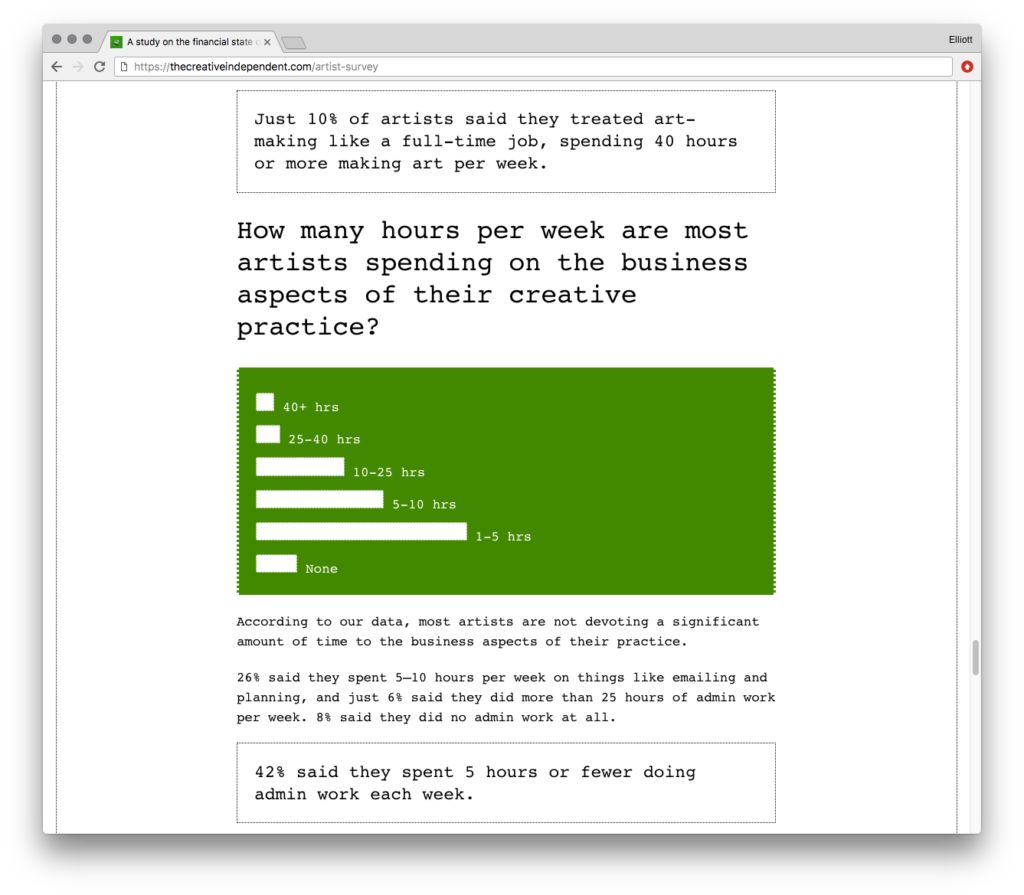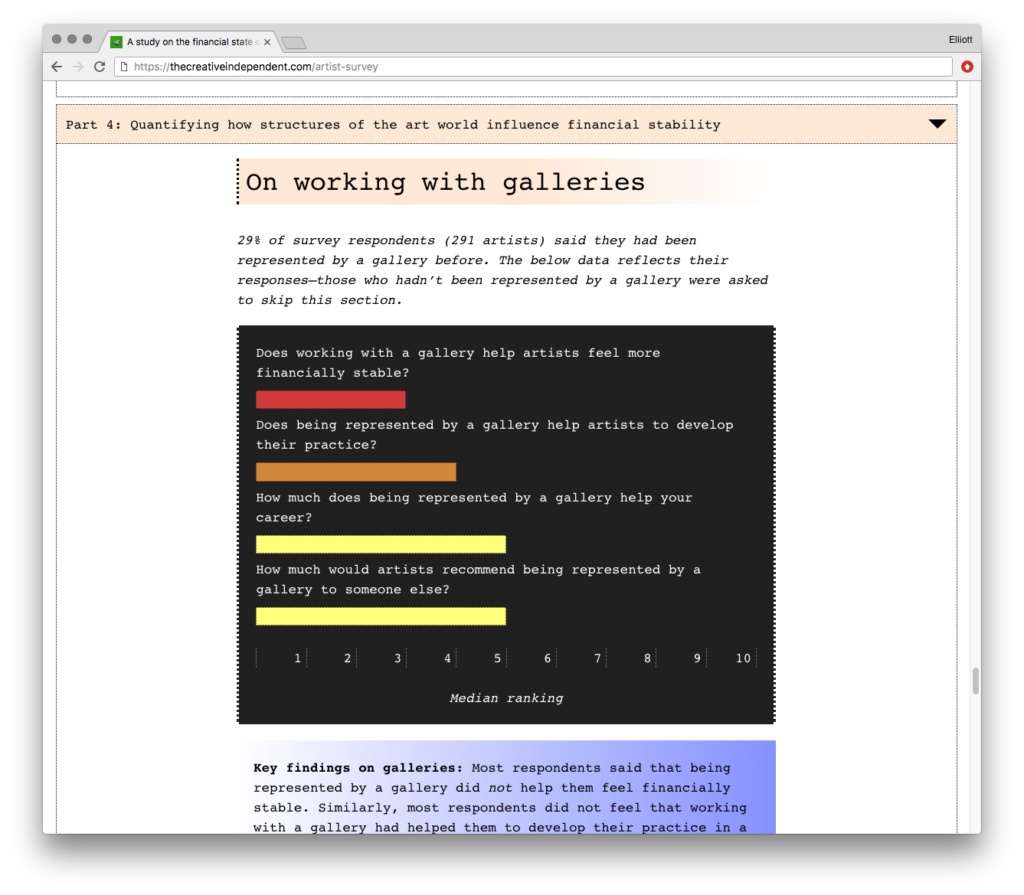Art World
How Hard Is It to Make It as an Artist? A New Study Shows There Are Many Paths to Success—and Failure
Over 1,000 artists weighed in.

Over 1,000 artists weighed in.

Sarah Cascone

Myths of the starving artist aside, just how financially tenable is a career in the visual arts? This spring, the Creative Independent, Kickstarter’s platform for providing support for creatives, launched a survey asking artists about just that. Today, the platform released a report based on the responses—which came in from 1,016 visual artists—with results that vary widely.
“For visual artists today, the path to financial stability is neither straight nor predictable,” said Willa Köerner, creative content director at the Creative Independent in a statement. “When faced with the question of whether to seek out gallery representation, attempt to sell art on their own, or keep a day job while hustling to make art on the side, many emerging visual artists have no firm guide posts to look to on their journey.”
Twelve percent of respondents said that on a scale of one to 10, with 10 being the highest, they did not feel at all financially stable. By contrast, only three percent rated their financial stability at a nine or 10. The median response was a five, but respondents identifying as women—a full half of the group—rated themselves a full point lower on average, as did Asian, African American, or Hispanic respondents, who respectively represented 10, four, and eight percent of the total responses.

The Creative Independent’s financial stability survey asked artists how much time they spend in the studio. Image courtesy of the Creative Independent/Kickstarter.
Many of the respondents were relatively new to the art world, with only 10 percent having worked in the field for more than 20 years, as opposed to a full 37 percent who had started within the last five years. A full 75 percent are based in the US.
The median income for respondents was just $20,000 to $30,000, with 60 percent making less than $30,000. Although the median household income in the US is $58,000, according to the 2016 census, only 19 percent of artists make over $50,000 a year.
With all that in mind, how do artists make it work? Having multiple sources of income helps, with 61 percent engaging in freelance work, and 42 percent having other jobs—an equal number of respondents have none-art positions as have jobs related to their studio practice. (Most respondents treat art as a part-time job, with just 10 percent making art 40 hours a week or more.)
Only 12 percent of survey participants count gallery sales among their top three sources of income. (Perhaps unsurprisingly, 29 percent also rely in part on family support or inheritance.) Nearly half of artists surveyed attribute less than 10 percent of their income to their art practice, as opposed to just 17 percent who make 75 to 100 percent of their money off their art.

The Creative Independent’s financial stability survey asked artists about how much working with a gallery contributes to financial stability. Image courtesy of the Creative Independent/Kickstarter.
Of the 29 percent of respondents who had had gallery representation, the experience did not appear to necessarily help much with financial success. On a scale of one to 10, the median response to whether galleries can assure financial stability was a three. On whether they’d recommend gallery representation to other artists, the median was five.
Art school also doesn’t appear to be particularly helpful for working artists. A full 63 percent of respondents had art degrees, but they only rated the experience a five in terms of how much it can contribute to an artist’s financial stability. Trial and error and learning by example are the most cited ways respondents felt they had learned how to achieve financial success in the art world, at 74 and 67 percent.
Reading about art-world news, on the other hand, appears to be a worthwhile use of artists’ time. More than a quarter of respondents spend more than eight hours a week reading about art in the news or on social media, with only one percent not consuming art news on a weekly basis.